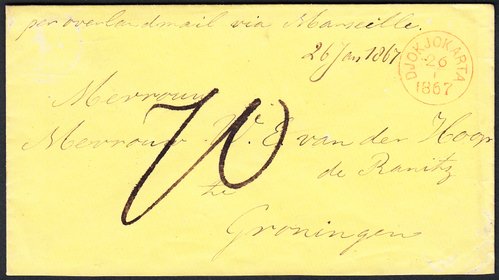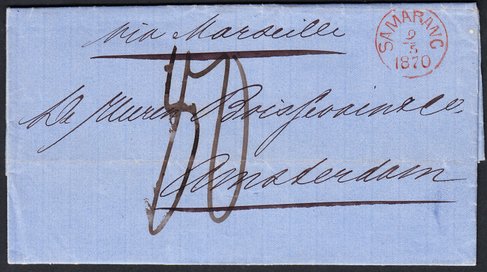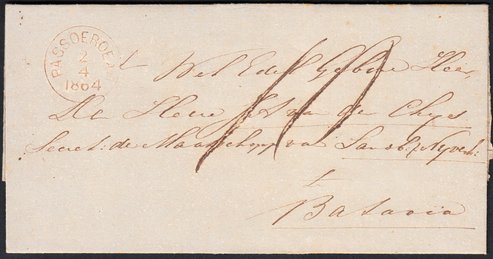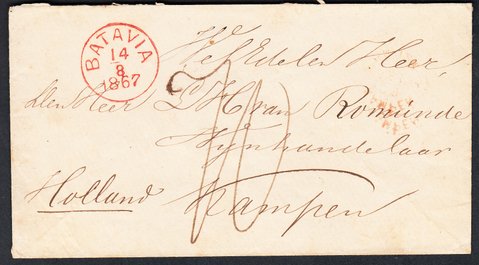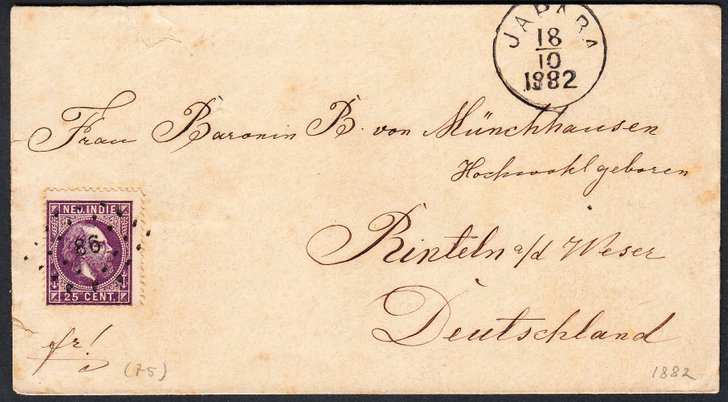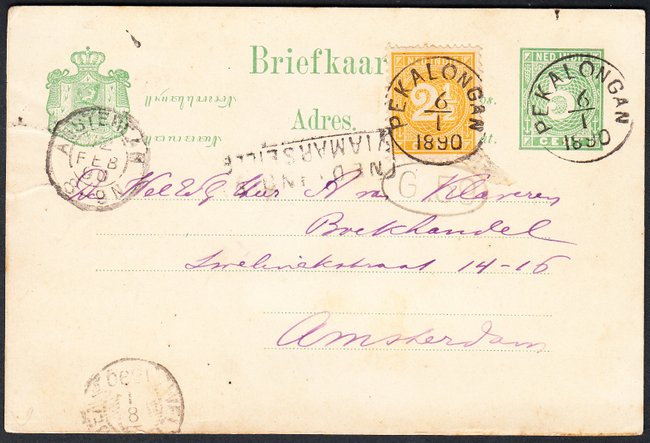The round cancel
The first recorded use of the round cancel is Batavia Aug 17 1861, but it was in use with all post offices from 1863. The postmark was intended as a datemark and not as an obliterator of stamps. The exception to this is on printed matter and sometimes on postcards where the round cancel was used from 1874 to cancel the lower-value stamps.
In early 1878 the round cancel was replaced by the small-round cancel, but a few towns continued to use the round cancel as shown below.

